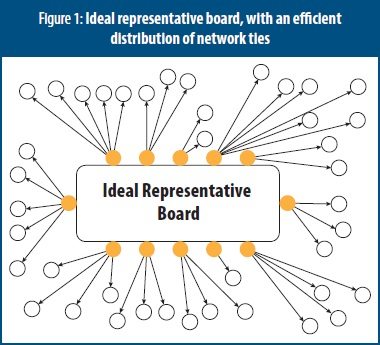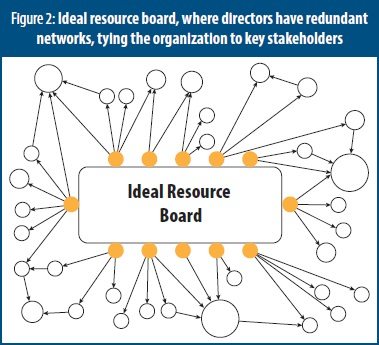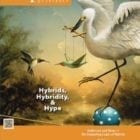
Editors’ note: This article was originally published on NPQ’s website, on July 25, 2013. It was excerpted, with permission, from You and Your Nonprofit Board: Advice and Practical Tips from the Field’s Top Practitioners, Researchers, and Provocateurs, edited by Terrie Temkin (Rancho Santa Margarita, CA: CharityChannel Press, 2013).
The recent Great Recession has helped nonprofits rethink how they engage and interact with current and future funders. What was considered to be solid, long-term funding from state and federal agencies is now more difficult to retain, and the United Way and other federated campaigns are less likely to provide long-term support. Nonprofit leaders have been struggling to develop strategies to find, and successfully secure, the funding necessary to meet the increased need for services that go hand in hand with tough times.
Here I dissect one of those techniques: using board members to champion nonprofit organizations to external stakeholders who may be able to open purse strings. This is not a new idea. Organizations have been placing the mayor, influential clergy member, or luminary of philanthropy on boards for decades. Even if they know the mayor would never attend a board meeting, they feel that by virtue of the office held, he or she will stand as a symbol of an organization’s quality. Advisory groups and task forces are yet more (and, in cases like the inactive mayor, more appropriate) tools for increasing the visibility and legitimacy of nonprofits that ultimately lead to funding.
I also discuss the phenomenon of board members as bridges to new resources, and two reasons why nonprofits may want to use bridges. The first is to bring information into the organization. This information typically revolves around funding opportunities or the happenings of other organizations in the field. The second is to bring information out of the organization to funders, such as highlighting the wonderful job that the nonprofit is doing in its good works. But not all organizations need the same type of bridge, and many would be better served thinking about board members as strategic resources with different strengths and weaknesses. Below I outline two types of boards and how each requires a different kind of board member.
Two Lenses on Ideal Boards
If board members are to be successful bridges to resources that are either untapped or need to be reinforced, the process of selecting these individuals becomes critical. Those involved in governance often think about choosing board members the way professional football teams think about drafting rookie players: What skills will this new member bring to the team, and what resources can this person help us attract? The type of member that you need for the team largely depends on your team’s current strengths and how you want to steer the organization in the future. Do you want to reinforce strengths or do you want to buttress weaknesses? Here we’ll draw on two theories in order to explore what might work best for your organization.
The Ideal Representative Board
There are two ways of thinking about how best to structure nonprofit boards in order to connect with external constituencies. The first comes out of sociological studies of networks of connections. We all possess an address book of contacts, some of whom we know very well—like our family members—and some who are only distant connections—the brother-inlaw of my barber, who is a good plumber. Mark Granovetter, a Stanford sociologist, set out to understand how people draw on contacts to find a job. He found that people with broader networks full of weak ties to friends of friends—that great plumber—were much more effective at getting information about job openings. It seems logical that people with larger networks are better able to understand what is going on in the larger environment.1
While there are many ways to measure how “good” a network is, the most important deals with its efficiency. Think of network connections as resources in themselves. It takes a certain amount of effort to tend to them, to make sure that you are in their good graces—or that they even remember who you are. An efficient network is one where every person connects you with a different resource pool.
You can also think about this from the point of view of redundancy. A redundant contact occurs when you have more than one connection to a single person. In effect, you are putting in more effort than is necessary to make a connection to that individual. The implication for nonprofit boards is that, ideally, they should look at their board members as a means for obtaining the greatest spread possible in connections.
It is helpful to think about the structure of board networks on a continuum. This model exists on one end. Organizations that have a diverse revenue structure might consider using this model, because they must be able to reach far and wide to activate a very diverse set of resources. For example, the American Cancer Society receives a great amount of its funding for education and research from individuals who participate in their varied fundraising events. The outreach to involve as many people as possible in these events is made easier with a well-connected board. Another type of organization that would fit this mold is an advocacy organization for individuals and families with an illness, such as the National Coalition for Cancer Survivorship. Board members can be viewed as the vital representatives of those who have experienced that particular malady. It follows that an effective board is one that incorporates the widest collection of experiences in order to help the organization better articulate the needs of its constituents. We see the ideal representative board (see figure 1) as one where each board member, represented as a dark circle, has a set of unique connections with whom they can communicate.


The Ideal Resource Board
A second lens on boards comes to a dramatically different interpretation of how they should be structured. We know that organizations exist to the extent that they can attract resources. The more desperately an organization needs a resource, the more it needs to bow to the demands of that resource provider—a situation that should sound familiar to many nonprofit leaders! Resource dependency is a theory that has been applied to nonprofit organizations repeatedly because it explains their positions in a web of resources so well. That said, organizations should concentrate their efforts on the critical resources and not waste time on the unimportant ones.
Sign up for our free newsletters
Subscribe to NPQ's newsletters to have our top stories delivered directly to your inbox.
By signing up, you agree to our privacy policy and terms of use, and to receive messages from NPQ and our partners.
If you think about boards as the means for reinforcing those connections to the most important resources, the concept of efficiency matters quite a bit less. Consider an organization that receives its funding from a handful of vital sources, such as the local United Way and a large benefactor (see figure 2). It would intuitively make sense to have several board members that have contacts with the same few key resource providers.
While the social network theorists would see this as an inefficient and redundant network, resource dependency scholars would view it as shrewdly understanding that redundancy can result in stronger bridges to those few important resources. The implication of the theory is that organizations with concentrated resources should think not only about the size of the address book but also, more importantly, about who is contained in those networks.
The Concept of Structural Holes
Although counterintuitive, the concept of structural holes is essential for how nonprofit organizations bridge to necessary resources. While the social network theory talks about having efficient networks as bridges to distant resources, Ronald Burt has a different idea. Burt gets at the value of a connection— basically, why are some connections so essential to organizations while others have little value? Burt says that we shouldn’t be measuring the bridge—or connection—in the network but rather paying attention to the hole over which you build the bridge.2
Consider an organization that relies on three large individual benefactors for the vast majority of its funding. The board should not worry about having an efficient network; rather, it will want each of the three benefactors to be connected to the organization by several points of contact. So the value of a bridge is equal to the resources that you wouldn’t be able to access without it. One step that a nonprofit organization can take is to create an inventory of its resource environment in order to understand the value of any structural holes in the network.
Bringing Legitimacy to the Organization
While one role of networks is to receive information from the environment (such as when a new funding initiative arises or a competitor shuts its doors), networks can also project information outward to the environment. Nonprofits exist in a world where their legitimacy matters. While merit certainly plays into the allocation of state contracts and private philanthropy, there is no question that the perceived legitimacy of your organization is also essential to securing those funding streams.
This process of isomorphism—or organizations tending toward looking like each other because that represents a “legitimate form”—can easily be seen in their propensity for raising funds through special events. Consider the number of charity races or annual dinners that go on in your community every year. (In fact, in certain sectors, without a charity race your organization might seem substandard.)
Board members can bring this legitimacy to your organization. This goes back to the earlier idea that, while you may know that the mayor would never attend your board meetings, having a person of this stature on your board signals to the community that your organization is important. The question then becomes, when should you be appointing people as figureheads and when should you not? The answer partly depends on what your organization needs vis-à-vis the resource environment. If your funding comes entirely from United Way, having the mayor on your board would have very little effect on funding allocations, given the program evaluations that United Way uses to make its decisions. But if you are seeking to distinguish your organization as the leader in a certain type of service delivery—particularly in the minds of the thought leaders in your community—having a luminary on the board could help cement that legitimacy. In the end, boards should consider the level of engagement they need from a board member before approaching prospective candidates.
How to Approach Building a Networked Board
Boards are not built in a day, as any leadership team knows well. We have all run into the boards that are populated by well-meaning, passionate individuals without the skill set necessary to help the organization move forward. We’ve also seen boards populated by members who, on paper, look like a dream team but in reality are not passionate about the organization’s work. So the question becomes, who should be on our board, and how do we build an effective one?
The answer is complex, but start by taking an inventory of where your organization is today in terms of funding and life cycle, the type of individuals on the leadership team, and the constraints that your organization faces in the resource environment. Just as successful businesses routinely scan their environments for competitors and potential clients, nonprofit organizations should also routinely take a treetop view of what other entities are out there doing similar tasks. But climbing that tree in order to peer over the horizon can be hard. Nonprofit organizations can be so intent on providing services, or serving a community, that they forget to lift their heads up and conduct a fundamental scan. Leadership teams should also look at themselves. What skills does each of the members bring to the boardroom? What skills are needed but missing? And, most importantly, how do team members interact with the resource environment?
• • •
I trust I have challenged a few nonprofit organizations to take a more nuanced approach to their boards. There are no one-size-fits-all solutions to how boards should work. At the same time, boards can be much more than watchdogs over the books. They can provide those essential links to the environment necessary to ensure access to funding streams.
Notes
1. Mark Granovetter, Getting a Job: A Study of Contacts and Careers, 2nd ed. (Chicago: University of Chicago Press, 1995).
2. Ronald Burt, Structural Holes: The Social Structure of Competition (Cambridge, MA: Harvard University Press, 1995).











